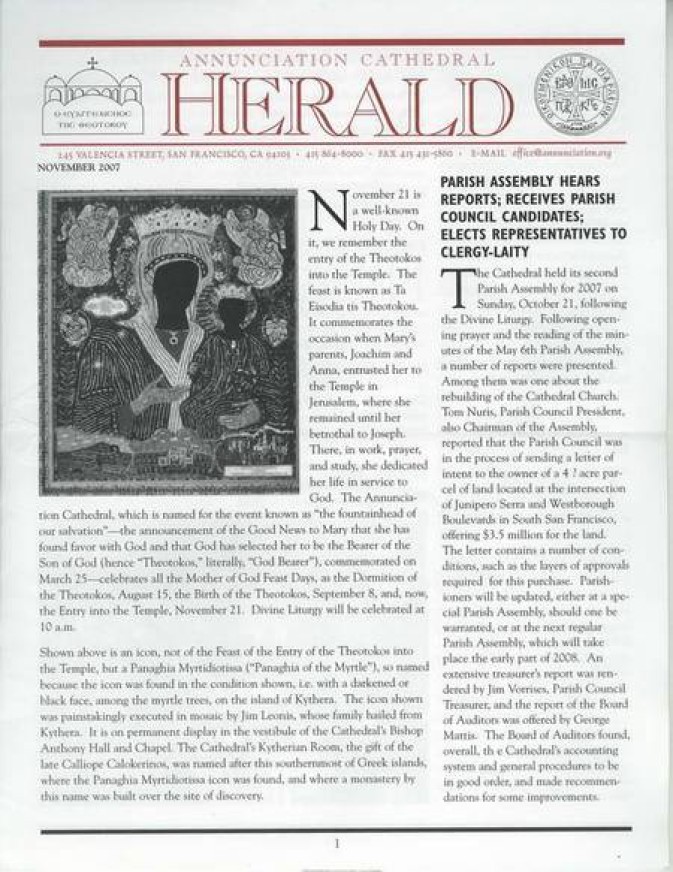Myrtidiotissa mosaic featured in Annunciation Cathedral HERALD
Reprinted by permission from Fr. Stephen Kyriacou
245 Valencia Street
San Francisco, CA 94103
415 864-8000
November 2007
November 21 is a well-known Holy Day. On it, we remember the entry of the Theotokos into the Temple. The feast is known as Ta Eisodia tis Theotokou. It commemorates the occasion when Mary’s parents, Joachim and Anna, entrusted her to the Temple in Jerusalem, where she remained until her betrothal to Joseph. There, in work, prayer, and study, she dedicated her life in service to God. The Annunciation Cathedral, which is named for the event known as “the fountainhead of our salvation”—the announcement of the Good News to Mary that she has found favor with God and that God has selected her to be the Bearer of the Son of God (hence “theotokos, “literally, “God Bearer”), commemorated on March 25—celebrates all the Mother of God Feast Days, as the Dormition of the Theotokos, August 15, the Birth of the Theotokos, September 8, and now, the Entry into the Temple, November 21. Divine Liturgy will be celebrated at 10 a.m.
Shown above is an icon, not of the Feast of the Entry of the Theotokos into the Temple, but a Panaghia Myrtidiotissa (“Panaghia of the Myrtle”), so named because the icon was found in the condition shown, i.e. with a darkened or black face, among the myrtle trees, on the island of Kythera. The icon shown was painstakingly executed in mosaic by Jim Leonis, whose family hailed from Kythera. It is on permanent display in the vestibule of the Cathedral’s Bishop Anthony Hall and Chapel. The Cathedral’s Kytherian Room, the gift of the late Calliope Calokerinos, was named after this southernmost of Greek islands, where the Panaghia Myrtidiotissa icon was found, and where a monastery by this name was built over the site of discovery.
See also:
Panagia Myrtidiotissa mosaic
Jim Leonis, creator of the Myrtidiotissa mosaic
